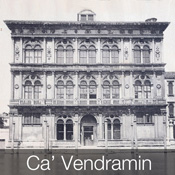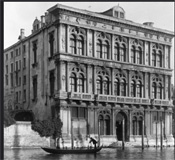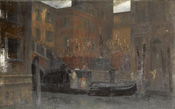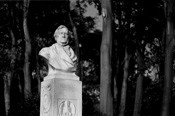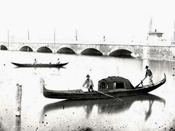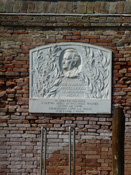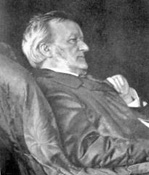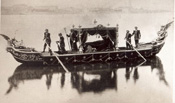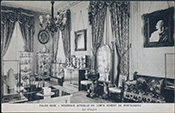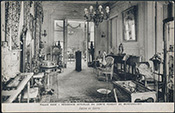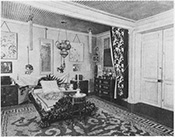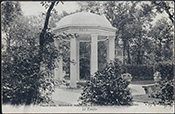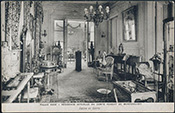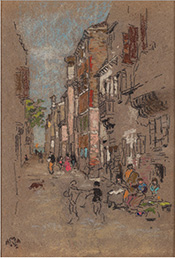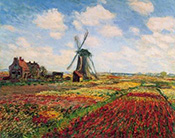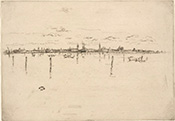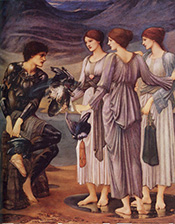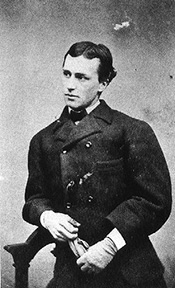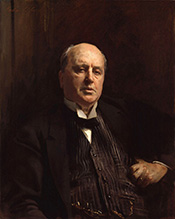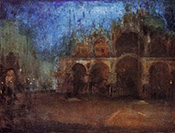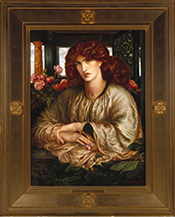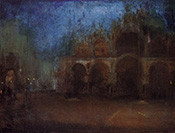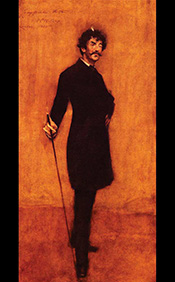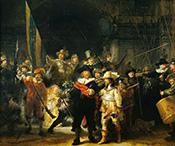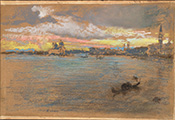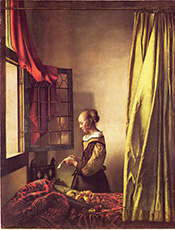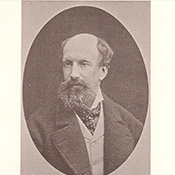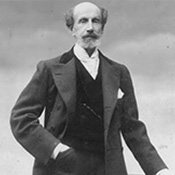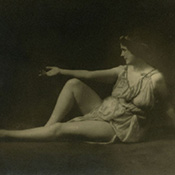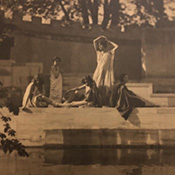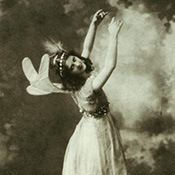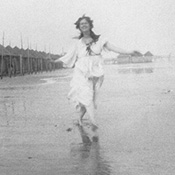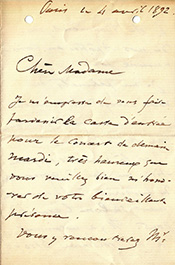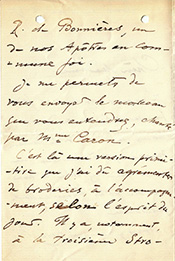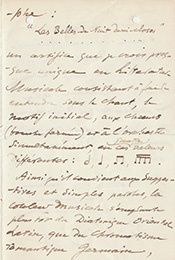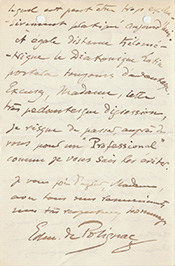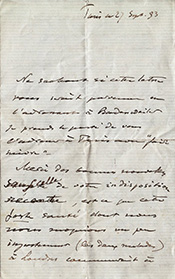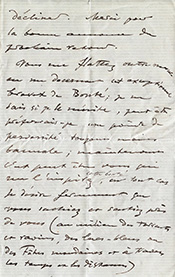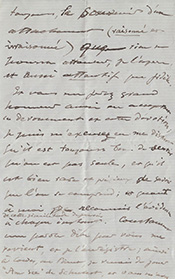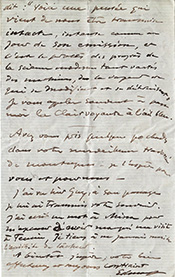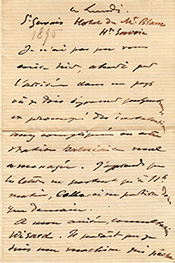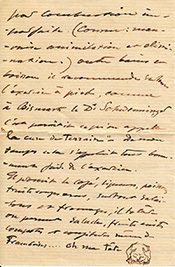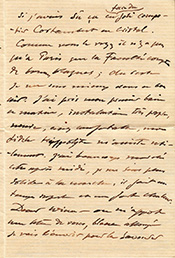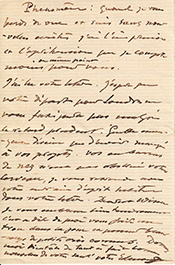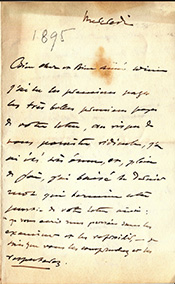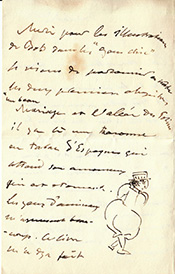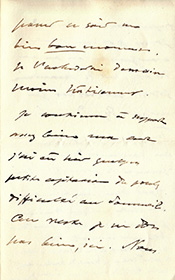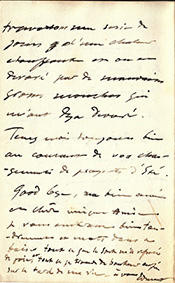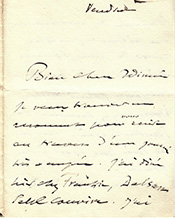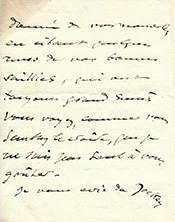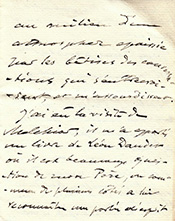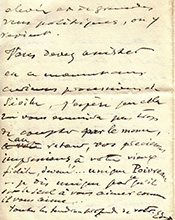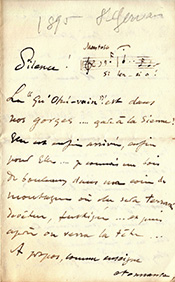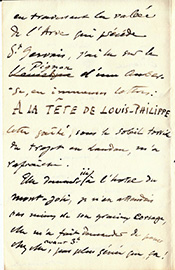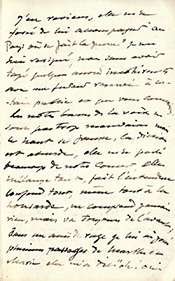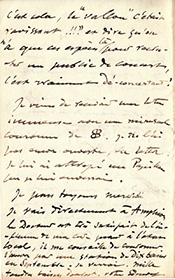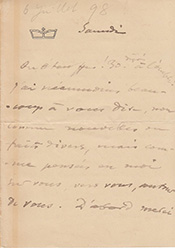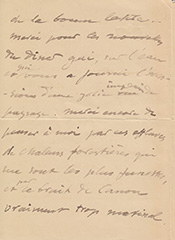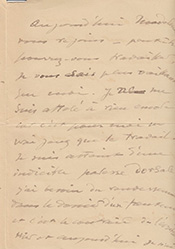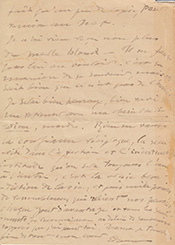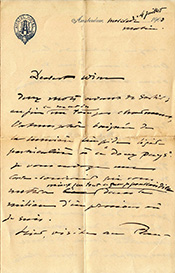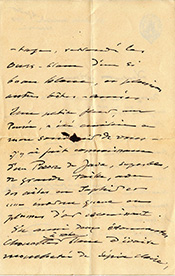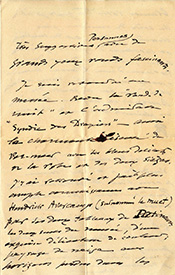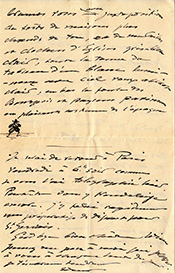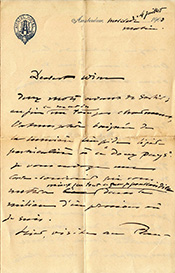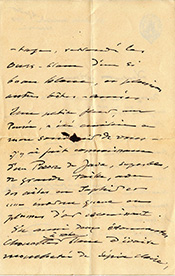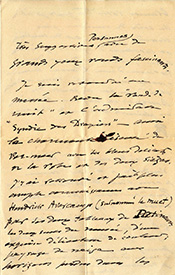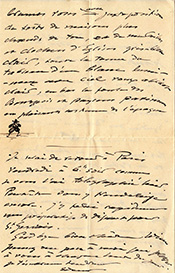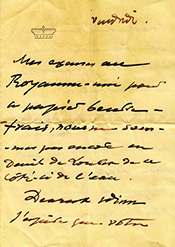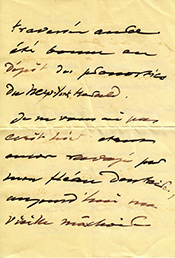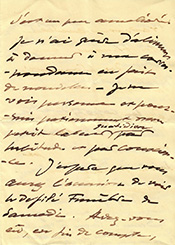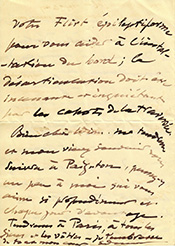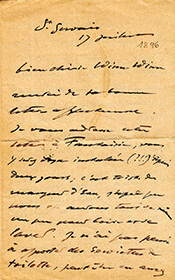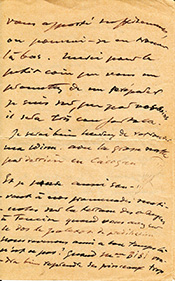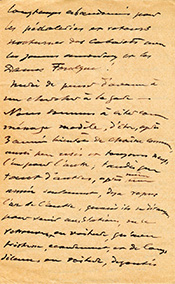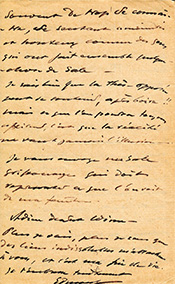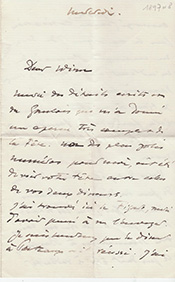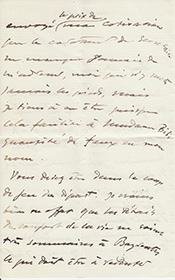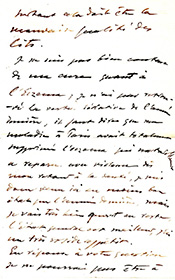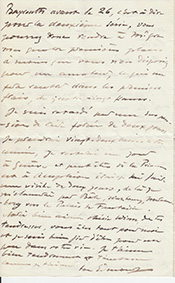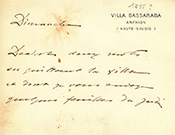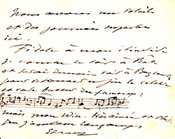Edmond and Venice
Edmond de Polignac loved Venice and visited the city in 1900 with his wife, the great musical patroness, Winnaretta Singer, Princesse de Polignac.After a luncheon given at the Palazzo Barbaro by the Bostonian banker Daniel Curtis and his wife, Ariana, Edmond was standing on the Barbaro balcony, overlooking the Grand Canal. Catching sight of this palazzo, directly opposite, he memorably exclaimed, "Ah! that is the place to live in! We must manage to get it one way or another!" Winnaretta acted briskly and decisively, and by November that year she had acquired the palazzo as a gift for Edmond, a triumph she finally announced at the Café Florian in Piazza San Marco.
As she was later to put it in her memoirs, “The next morning I went to see an agent, who told me that there would be no question of buying the Palazzo, which was inhabited by a rich South American who was living there very happily with a great friend. But the course of true love rarely runs smooth, and a few months later the same agent came to see me in Paris and revealed that as the result of a quarrel the South American was leaving Venice, and the sale of the Palazzo was not impossible. For more than forty years I spent several months each summer within the walls of the Palazzo Manzoni, which had become the Palazzo Polignac.” Edmond famously described Venice as being "the only city in the world where you can hold a discussion in front of an open window without having to raise your voice." Today the city is lively, cosmopolitan and energetic, but Edmond's remarks certainly hold true on a quiet autumn evening overlooking the Grand Canal, or in some of the remote and enchanting backwaters of the city. That eventful 1900 trip was well spent in the company of several distinguished friends. He took leisurely walks along the Grand Canal with Marcel Proust and Helen de Caraman-Chimay. Winnaretta organised gondola trips by moonlight, and the composer Reynaldo Hahn entertained the company with songs (Winnaretta had installed her miniature yacht-piano in a gondola especially for the occasion).
Edmond enjoyed visiting the music library in San Marco, where he was able to see at first hand the manuscripts of Monteverdi and Rossi. The poet Henri de Régnier sometimes accompanied Edmond on his walks, discussing the beauties of the city and its picturesque inhabitants. The Polignacs were entertained handsomely at the Ca'Dario, which had been beautifully restored by the Countess de la Baume-Pluvinel, and likewise at the Palazzo Barbaro, where Daniela and Ariana Curtis had lived since 1881, counting Henry James, Robert Browning, John Singer Sargent and Claude Monet among their circle of friends. In 1909, Monet was to paint an exquisite view of the Palazzo Contarini Polignac, seen from the Barbaro watergate, directly opposite on the Grand Canal. Claude and Alice Monet arrived to Vencie 30.9.1908 and stayed for 6 weeks. (First at Palazzo Barbaro.)He painted 37 paintngs of 8 subjects, out of which 2 are of Palazzo Polignac
During the 1900 trip, the Polignacs stayed at the Casa Wolkoff, an agreeable palazzo in Dorsoduro belonging to Count Wolkoff, a colourful Russian émigré who had been a friend of Wagner's. It is fascinating to speculate on what Edmond would have made of modern Venice.
Edmond the Dandy and Aesthete
What was Edmond like? Our first glimpse of him comes in the lavish group portrait by James Tissot painted in 1868, where we see him seated to the right of the painting, among his fellow members of the Circle of the Rue Royale an exclusive Parisian club. Edmond is dressed in high style, every inch the Second Empire dandy, his black morning coat in dramatic contrast to his snow-white piqué waistcoat. He wears a simple pearl stickpin in his blue cravat, complemented by pearl cufflinks. The boldly patterned black-and-white trousers strike a rakish note, but the insistent impression is of a thoughtful, dreamy and meditative prince. He has been reading a book about Louis XVII, which he holds loosely in his lap with an elegant forefinger marking the page. To the far right of the piece, we see the elegant Charles Haas, who served as principle model for Swann in Marcel Proust's great masterpiece, A la recherche du temps perdu. Proust was to become a good friend and confidant of Edmond, and it is to him we turn for valuable insight into Edmond the man as opposed to Edmond the dandy-aesthete.- le comte Allred de La Tour-Maubourg (1834-1891)
- le marquis Alfred du Lau d'Allemans (1833-1919)
- le comte Etienne de Ganay (1833-1903)
- Le capitaine Coleraine Vansittart (1833-1886)
- le marquis Rene de Miramon (1835-1882)
- le comte Julien de Rochechouart (1828-1897)
- le baron Rodolphe Hottinguer (1835-1920)
- le marquis Charles-Alexandre de Ganay (1803-1881)
- le baron Gaston de Saint-Maurice (1831-1905)
- le prince Edmond de Polignac (1834-1901)
- le marquis Gaston de Galliffet (1830-1909)
- Charles Haas (1833-1902)
Looking back to Edmond's early adulthood, the most enduring image is of the languid young dandy, posing artlessly in an armchair in James Tissot's exquisite portrait of the Cercle de la rue Royale (above, painted 1868), a refined group of friends made up of members of the exclusive Jockey Club. Whilst he does not seem exactly out of place, Edmond seems detached from this somewhat aggressive collection of men of action - soldiers, politicians, men of the turf - and deeply immersed in his own world. If any on the balcony could claim to be a kindred spirit, it was Charles Haas, standing in the doorway at the far right of the painting. He is generally acknowledged to be the principal model for Swann in À la recherche: "Et pourtant, cher Charles Swann, que j'ai connu quand j'étais encore si jeune et vous près du tombeau, c'est parce que celui que vous deviez considérer comme un petit imbécile a fait de vous le héros d'un de ses romans, qu'on recommence à parler de vous et que peut-être vous vivrez. Si dans le tableau de Tissot représentant le balcon du Cercle de la rue Royale, où vous êtes entre Galliffet, Edmond de Polignac et Saint-Maurice, on parle tant de vous, c'est parce qu'on voit qu'il y a quelques traits de vous dans le personnage de Swann."
A closer inspection of Edmond (see detail, below), reveals how set apart he was from his peers in the painting. All of the sitters are expensively dressed in height of Second Empire fashion, though only a few can be said to be bordering on outright opulence, such as the marquis Alfred du Lau d’Allemans, second from the left, who wears a high-cut golden silk waistcoat in an otherwise fairly restrained ensemble. The true dandies of the piece, understated though they are, are Charles Haas and Edmond de Polignac. Charles wears an unusual, flared light-grey silk top hat that was specially made for him by Delion, and a tan topcoat worn with insolent dash. He has loosened his heavily-starched high collar. Tissot cannot have failed to note that the flamboyant Jewish collector and critic was a newcomer to the club. It is likely no accident that he is standing in the doorway to the balcony. He had been blackballed from the club no fewer than four times, until finally his heroic exploits in the Franco-Prussian War made it very nearly impossible to refuse him admittance. If ever the definitive portrait of an arriviste were to be nominated, this might well be it.
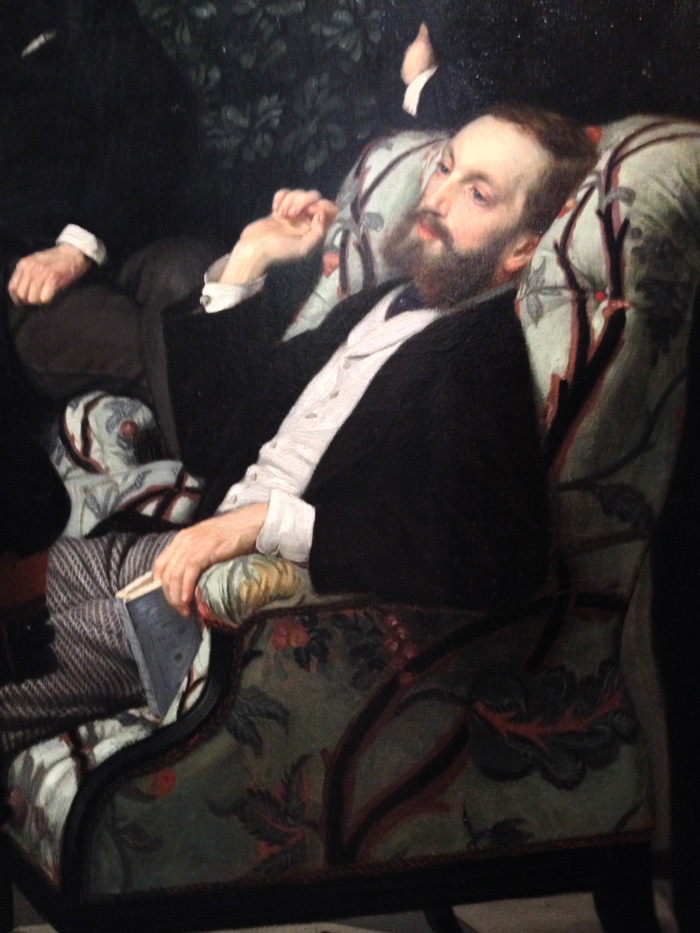
Prince Edmond de Polignac
Edmond and Music
Edmond the ComposerWinaretta Singer's first became aware of Edmond as a result of his work as a composer. In 1891 she made a triumphant entry into Parisian society after meeting the influential comtesse Élisabeth de Greffuhle. The friendship blossomed due to their mutual interest in music, and Winnaretta made a generous donation of 10,000 francs (exactly matching Greffuhle's) to the Société des Grandes Auditions Musicales. In July that year she was invited to the comtesse's party on the Bois de Boulogne which featured work by Fauré, Bach and Wagner. There was also on the programme a new piece by a composer with whom she was not yet familiar. This was Robin m'aime, by Edmond de Polignac. Links :Robin m’aime
This was Winnaretta's first exposure to Edmond and his music. It predated by some time the energetic marriage-broking subsequently performed by Elisabeth and her cousin, Robert de Montesquiou. Robin m'aime was a striking orchestration of the old Picardian chanson, in which a shepherdess, Marion, sings of her lover, a knight errant called Robert who in practice is always referred to as Robin, the diminutive of his name. The song forms part of a cycle composed in the 1280s by an enterprising troubadour known as Adam the Hunchback. It is still widely celebrated as the earliest example of a major secular composition in France. Tempting though comparison may be, there is no proof of any connection with the English legend of Robin Hood and Marion, but the same general principles apply in terms of theme and treatment: thwarted love flourishing in an Arcadian setting with intermittent outbursts of interference and disapproval from authoritarian figures.
Edmond's orchestration of the song was performed at various concerts in his lifetime and had had a mixed critical reception. The scoring of the opening measures, for horn and harp, came in for a particular drubbing, possibly because this was an unusual (for the time) combination and a little de trop for conservative tastes. Reynaldo Hahn, however, never a voice to ignore, was appreciative of Robin m'aime, even if the workaday critics were not: "Everything I heard astonished me: the fine and brilliant coloration of your orchestra, the nervous distinction of your style, the sophistication of your tonalities. Robin m'aime holds a special place among my favourites. It is musical humanism, or musicological poetry, whichever your prefer." The work is certainly an uplifting and original take on a traditional melody, and the horns and harps seem to have been a clever choice. The horns, of course, were intended recreate something of the bracing, happy-go-lucky pastoral life which Robin and Marion led in the woods and plains of Picardy, between lively episodes of brigandage and persecution. The harp stands in for the lyre of the troubadour, a pleasing nod to an ancient and romantic tradition. At all events, the work is of some importance when it comes to an overall consideration of Edmond's output, since it is an early example of a preoccupation he returned to again and again: the concept of creating musique de plein air, that is to say music written with the express intention of transporting the listener outdoors, evoking a sense if not of nature in the raw, at least the joys of being in the open air, whether in a wood, the open countryside or in the mountains. The optimistic notion, perhaps, is that musique de plein air might render musique en plein air completely redundant.
During a trip to Podstein in Austria, Edmond's response to the mountains was singular and noteworthy, not the reactions of a lounge lizard by any means: "Above me, millions of gnats were buzzing in the high summits, bathed with sunlight and filling the forest with a perpetually held note, invariably a 'do', as if sitting on the string of an enormous invisible violin." One of the resulting compositions was Am Thüringerweld, Link :Am Thüringerweld a setting of passages from Goethe, but this is a comparatively traditional work for chorus and orchestra. Two later works, both a cappella, were Effet de lontain and Le Vallon, both of which were forward-looking in style and had unusual features, such as passages where the singers were required to sing à bouche fermée, creating an effect not dissimilar to that of the insect-choirs he had heard in the mountains. Link:Effet de lontain
Link:Le Vallon
Leaving aside these modernistic effects, another (for the time) unusual aspect of Edmond's work, in which he was something of a pioneer, was the use of photographic projections as backdrops to concerts. Thus, he sought to introduce a theatrical or even operatic element into straightforward orchestral or choral works. The Rue Cortambert performances of Effet de lontain and Le Vallon were both accompanied by such projections, Effet by a sunlit Flemish village and Vallon by a pastoral scene. Marcel Proust was, as ever, an enthusiastic supporter: "I felt the other night [at Rue Cortambert] what a serious, vast and sweet poet you are. These sonorous waves blend like the waves of the 'vessels' of Le Vallon, these vast spaces measured by the music between these distant chants in the mountain, the differences of altitude and distance rendered palpable, and the great and sad majesty of these spaces and these hearts, all that touched me very much." At another concert, in honour of Edmond's sixty-seventh birthday, la vie parisienne (perhaps a more objective critic than Marcel) offered further praise of the composer's ability to recreate a sense of the outdoors in the concert hall: "His music has a curious power to burst the walls and create a feeling of the outdoors; listening to it, with its ardent and ambitious sensuality, one breathes in the summer evenings, with a passionate desire to savour all the aromas of the atmosphere." (It should be said that not for the first time, La vie made the affectionate but firm observation that it was a pity Edmond should inevitably be judged as a prince-composer, rather than a mere composer, "just like everybody else".) Colleagues too were just as appreciative, especially when they were called on to interpret the work. When the Chanteurs de Saint-Gervais were called upon by Winnaretta to perform various a cappella religious works by Edmond, their conductor, Charles Bordes, assured him that their account of the Salve Regina would be "out in the prairie". The composer Ernest Chausson, who heard the performance, noted that it came across not as a "religious piece from church, but a religious hymn [...] A lovely mélange of mysticism, poetry, and the picturesque." Taken together, these four independently drawn conclusions about Edmond's work suggest he had achieved what he set out to achieve in both his sacred and secular work: a naturalistic sense of immediacy, time and place; a portal to a world behind the auditorium; a world very much his and detached from the artificiality of fashion or social position. This disregard for convention was also also a characteristc of Edmond's social interactions in Paris. Unlike many of his peers, he was consistently affable and courteous in all his encounters with newcomers to the highly exclusive Parisian inner circles..
Edmond and Richard Wagner
Edmond, Wagner and VeniceFollowing Edmond's death in 1901, Winnaretta might easily have been tempted to enter a prolonged period of mourning. As it was, she decided to celebrate Edmond's memory by generously contributing to the annual celebrations held in Venice on the anniversary of Richard Wagner's death. The concert she organised in February 1902, in the courtyard of Wagner's former home, the Palazzo Vendramin Calergi, was the first major public event held here in Edmond's memory and a characteristically clever piece of organisation on Winnaretta's part. Pictures : Palazzo Vendramin
She first won over the Duca della Grazia, the owner of the palazzo, who was happy to host the concert. She then persuaded the city authorities to allow the Banda Cittadina, Venice's municipal band, to transfer their annual Wagner concert, traditionally held on the anniversary of Wagner's death, from the Piazza San Marco to Vendramin Calergi. Finally, as a gesture of thanks, she offered to sponsor the annual Wagner festivities in Venice, a tradition she continued for many years. Thus, she saw to it that a much-loved annual event also came to be seen as a lasting memorial to Edmond. Every year her generosity was warmly applauded in the local press. Venetians were glad to see an expatriate actively engaged in the cultural life of the city, and they were proud of Wagner, who had had cult status here in his lifetime but had rapidly become something of a divinity in Venice since his death. Picture : Wagner in Venice (2 pictures of statue and writing )
Wagner was one of the principle passions shared by Edmond and Winnaretta, a recurrent source of pleasure for them as witnessed by their trips to Bayreuth. Edmond's love for Wagner had been kindled in his youth. In fact in 1861, he met the composer in person at the artistic club of which he and his brothers were founder members, the Cercle de L'Union artistique. Wagner recalls the meeting in his memoirs: "The society often held its meetings at the house of a certain Count Osmond, a lively young man, who had lost an arm in a duel, and posed as a musical dilettante. In this way I also learned to know a young Prince Polignac, who interested me particularly on account of his brother, to whom we were indebted for a complete translation of Faust. I went to lunch with him one morning, when he revealed to me the fact that he composed musical fantasies. He was keen to convince me of the correctness of his interpretation of Beethoven's Symphony in A major, in the last movement of which he declared he could clearly demonstrate all the phases of a shipwreck." As the years went by, Edmond's own musical output as a composer became increasingly sophisticated, both in his development of the haunting Octatonic Scale as a basis for choral and orchestral compositions, and his growing reputation as an accomplished chamber composer of the Belle Époque.
Edmond and the Arts
Edmond de Polignac and the ArtsTo gain a full impression of Edmond's passion for music and the arts, we need to look back to his early years. Edmond grew up in his father's idyllic country estate, Wildthurn in Bavaria. He was physically delicate and prone to illness, unlike his more robust brothers, and his parents were thoughtful enough to encourage his creative inclinations, which he showed from an early age. A music professor was brought in from Munich, and Edmond happily studied piano, harmony and composition. There was a miniature theatre in the castle, and he and his brothers often devised and put on original performances there, an enterprise he reprised later in life when he devised lavish musical tableaux vivants in Paris. His early life in Paris, where he studied at the Conservatoire, was as much a social success as it was a musical awakening. Picture 2 : Paris Conservatory
He was witty, charming and popular, an excellent host and guest and, as his musical biographer Sylvia Kahan points out, popular with men for his social poise and with women for his charm and tall, angular good looks. As we note in the Tissot painting, he was a dandy par excellence, standing out in an age where conspicuous elegance was the norm amongst men of his class. Perhaps his true aesthetic awakening came when he met the flamboyant comte Robert de Montesquiou, Picture 1:Robert de Montesquiou
Paris's acknowledged arbiter of elegance, whose apartment on the Quai d'Orsay, in the attic of his parents' house, was a riotously extravagant paradise of exotic and uninhibited design. There is no doubt that his friendship with Robert played a crucial role in his increasingly refined and knowledgable passion for the decorative arts.
Edmond and Robert de Montesquiou
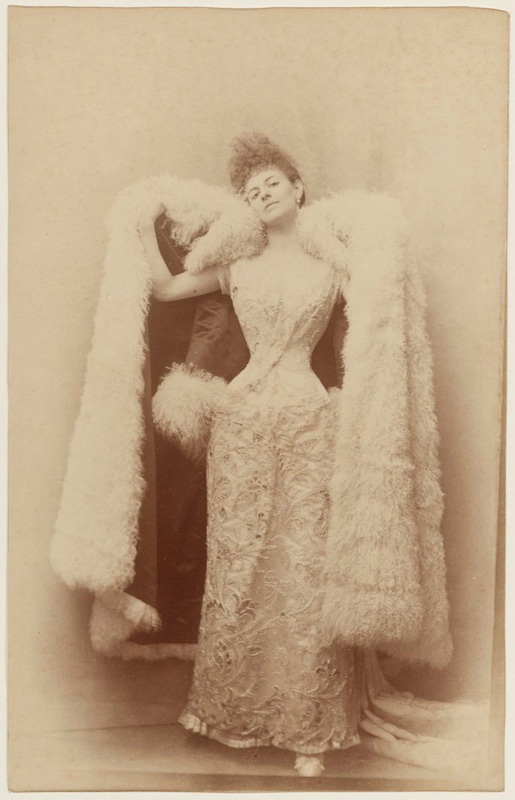
La Comtesse Greffulhe Dans une Robe de Bal
Yet his early friendship with Robert was undoubtedly a period of great liberation and inspiration, setting him further apart from the conventions of the Second Empire in which he had spent his youth.
Edmond and Artists
During the Nineties, Edmond rapidly developed a taste for the contemporary art of the time, notably the work of Claude Monet. On one memorable occasion he was outbid at an auction in Paris where he attempted to buy Monet's Champs de tulipes en Hollande. Picture : Champs de Tulipes en Hollande
The successful buyer turned out to be his future wife, Winnaretta Singer. Later in life, Edmond was to tell the story against himself: “I married the American and could look at the painting as often as I liked.” Thanks to Robert, Edmond had also been immersed in the work of the Pre-Raphaelite Brotherhood during their trip to London in 1885, where their host, the American writer Henry James, had given them something of an artistic tour of London's galleries. Picture : Henry James 1885
During that trip, Edmond had also had the opportunity to view recent works by Whistler and Moreau, alongside paintings by Rossetti and Burne Jones. Picture : Whistler Picture :Rosetti Picture :burne Jones
During the trip, they also encountered a number of prominent figures including the poet Algernon Swinburne, a somewhat unstable and decadent character who frequently found himself pushed to the margins of London society. Picture :Algernon Swinburne,
Marcel Proust records the meeting, at which Edmond revealed his views on the precedence of high art over noble birth: "...he did not disregard the nobility, but held nobility of the spirit above all else. And one evening when Swinburne (at Lady Brooke's if I remember correctly) told him: 'I do believe that my family is distantly related to yours, which is very flattering for me', and it was with great sincerity of heart that the prince replied: 'Believe me, of the two of us it is I who am most honoured by our kinship!'"
Edmond was also alive to the work of the Old Masters, as witnessed by a description, in a letter to Winnaretta, of a his visit to the Rijksmuseum in Amsterdam: “I returned to the museum, where I saw again Rembrandt's The Night Watch and the Drapers Picture : Night watch of Rambrandt
—and also Vermeer's charming Liseuse with those delicate blues in her dress and in the chairs. Picture : Vermeer Liseuse I found and made myself more deeply acquainted with Hendrik Avercamp, nicknamed le muet, through two of his skating paintings, the only two in the museum.
There is a truly exquisite delicacy of colour, the snowy landscape with horizons lost in a pink mist, juxtaposed with the warmer tones of rooftops and houses, and the light gray-blue walls and bell towers of the churches. The overall palette is a gleaming white, offset by a light, apricot-red sky, and the crowds of bourgeois and peasant skaters, all clad in the pleasing costumes of the day." Meanwhile, Edmond's musical sensibilities grew apace alongside his newly-found passion for beautiful objects. In particular he formed a passion for Wagner, something he was to share with Winnaretta over the years and which was to become an important part of the palazzo's history in the early years of the 20th century.
Edmond in Photographs
Following Edmond's death, Proust wrote a moving eulogy in Le Figaro, in which he memorably described Edmond's appearance in his later years: "Little by little the spiritual flame that inhabited prince Edmond de Polignac sculpted his appearance to the shape of his mind. But his physiognomy had remained that of his lineage, anterior to his own individual essence. His figure and his face were like a disused keep that has been rebuilt as a library." It is a remarkable observation, drawing one's attention forcibly to Edmond's complex and hugely creative personality. In his later years, one sees in photographs something of the more austere Edmond described by Proust, although though he is still an unmistakably elegant figure. A cheerful group portrait with Proust, Winnaretta and other members of the circle is a good example. His carte de visite photograph by Nadar, by contrast, gives us a clear glimpse of the Edmond described by Marcel Proust.Also of particular interest is a photograph accompanied by one of Edmond's musical manuscripts, now in the collection of the Palazzetto Bru Zane.
Edmond and Isadora Duncan
1903 saw the arrival in Venice of Isadora Duncan, accompanied by her brother Raymond, who took a photograph of her dancing along the beach on the Lido.Isadora was the pioneer of a kind of free-form dance, an amalgam of ballet steps, gymnastics and classical poses and manoeuvres taken from Ancient Greek friezes. She and her dance troupe, the Isadorables, were enormously popular in Europe and the USA in the first decades of the century. The Isadorables were an unusual collection of young women; the six of them were all to become Isadora's adopted daughters. Isadora recalled meeting Edmond for the first time at his home in Rue Cortambert in Paris: "I met the Prince de Polignac, a fine musician of considerable talent; an exquisite, slight gentleman, who always wore a little black velvet cap, which framed his delicate, beautiful face. I donned my tunic and danced for him in his music-room, and he was enraptured. He hailed me as a vision and a dream for which he had long waited. My theory of the relation of movement to sounds interested him deeply, as did all my hopes and ideals for the renaissance of the dance as an Art. He played for me delightfully on a charming old harpsichord, which he loved and caressed with his finely tapering fingers. I felt at once for him the warmth of appreciation, and when he finally exclaimed, 'Quelle adorable enfant. Isadora, comme tu es adorable,' I replied shyly, 'Moi aussi, je vous adore. Je voudrais bien danser toujours pour vous, et composer des danses religieuses inspirés par votre belle musique.' And then we envisaged a collaboration. Alas, what a despairing waste there is on this earth. The hope of a collaboration, which would have been so precious to me, was soon afterwards cut short by his death."
Edmond on Love and Life
Edmond was a deeply spiritual and reflective man, something difficult to reconcile with his dandified image in the early years until one delves deeper into his personality. He was to become increasingly disenchanted with the superficial hurly-burly of Parisian high society. This is evidenced in a letter he wrote to Winnaretta from the Jockey Club in 1895: “I write to you from the Jockey amid an atmosphere thickened by the nonsense of the conversations that intrude on me and daze me.” He was to place ever-increasing value on his blossoming relationship with Winnaretta. Again in 1895, he makes it clear how much he values their love and friendship: “I embrace you very tenderly and impart in my kisses everything that fate has bestowed on me of joy, and all that finally gives me happiness in the twilight of my life.” In 1898, he sets out his views on what he saw as the perfect definition of true love in greater and memorable detail: “I'll be happy and well pleased to meet you with my sweetheart Winn on Tuesday. Nothing is worth more than mutual trust, security in affection, and the indestructible certainty that we will always be in harmony with one another. This is the true blessing of life—garlanded by a thousand points of similarity that connect our thoughts every day more more and more, and thankfulness for the close and vivid memories I have of our times together. Dearest, I kiss you with all my heart. Edmond”. Picture group letters of EdmondLettre 57
Paris, le 4 avril 1892.
Chère Madame
Je m'empresse de vous faire parvenir la carte d'entrée pour le concert de demain mardi, très heureux que vous veuillez bien m'honorer de votre bienveillante présence.
Vous y rencontrerez M. R. de Bonnières , un de nos Apôtres en commune foi.
Je me permets de vous envoyer le morceau que vous entendrez, chanté par Madame Caron.
C'est là une version primitive que j'ai dû agrémenter de broderies, à l'accompagnement, selon l'esprit du jour. Il y a, notamment, à la troisième strophe :
" Les Belles de Nuit demi-closes",
un artifice que je crois presque unique en Littérature Musicale consistant à faire entendre sous le chant, le motif initial, aux choeurs (bouche fermée) et à l'orchestre simultanément, en ces quatre valeurs différentes ( notes de musique).
Ainsi qu'il convient aux suggestives et simples paroles, la couleur musicale s'emprunte plus tôt du Diatonique Oriental Latin, que du Chromatisme Romantique Germain, lequel est peut-être trop exclusivement pratiqué aujourd'hui.
A égale distance kilométrique, le Diatonique Latin portera toujours davantage.
Excusez, Madame, cette très pédantesque digression, je risque de passer, auprès de vous, pour un "Professional" comme je vous sais les éviter.
Je vous prie d'agréer, Madame, avec tous mes remerciements, mes très respectueux hommages Edmond de Polignac.
Lettre 75
Paris, ce 27 sept. 93
Ne sachant si cette lettre vous serait parvenue en l'adressant à Badenwailer je prends le parti de vous l'adresser à Paris avec "faire suivre".
Merci des bonnes nouvelles, sauf celle de votre indisposition récente, est-ce que cette forte santé dont nous nous moquions un peu injustement (les deux malades) à Londres, commencerait à décliner ? Merci pour la bonne annonce du prochain retour.
Vous me flattez outre mesure en me décernant cet exceptionnel brevet de Bonté ; je ne sais si je le mérite, peut-être préférerais-je une pointe de perversité toujours moins banale ; maintenant c'est peut-être vous qui me l'inspirez, cette bonté, en tout cas je désire fermement que vous sachiez et sentiez près de vous (au milieu des torrents et ravins, des lacs bleus ou des Fêtes mondaines, et à travers les temps et les distances) toujours, le souvenir d'un attachement (raisonné et irraisonné) que rien ne pourra atténuer, je l'espère, et aussi attentif que fidèle.
Et vous me ferez grand honneur aussi en acceptant ce dévouement et cette dévotion ; je puis m'excuser en me disant qu'il est toujours bon de sentir qu'on n'est pas seul, et qu'il est bien rare et précieux de savoir que l'on se comprend ; quant à moi, je reconnais l'évidence de cette similitude de pensée à chaque instant. Constamment une parole dite par vous me revient, et je l'enregistre ; ainsi à Cordes, au piano, je venais de jouer "Am see" de Schubert, et vous m'avez dit :"Voici une pensée qui vient de nous être transmise intacte, intense comme au jour de son émission, et c'est le procès des progrès de la science moderne tant vantés, des machines, de la vapeur etc... qui se modifient et se détruisent".
Je vous appelle souvent à part moi la Clairvoyante à l'oeil bleu.
Avez-vous pris quelques pochades dans votre merveilleuse traversée des montagnes ? Je l'espère pour vous et pour nous.
J'ai vu hier Guy, à son passage. Je lui ai transmis votre souvenir. J'ai écrit un mot à Misia pour m'excuser d'avoir manqué ma visite à Tencin, je tiens à ne jamais mériter l'épithète de lâcheur. A bientôt j'espère; votre bien affectueux et toujours constant Edmond.
Lettre 76
(1895 ? non daté)
Ce lundi, St-Gervais Hôtel du Mt Blanc, Hte-Savoie.
Je n'ai pas pu vous écrire hier, ahuri par l'arrivée dans un pays où je dois séjourner quelque temps et préoccupé des installations assez compliquées en cette station balnéaire mal aménagée. J'apprends que les lettres ne partent qu'à 11h du matin, celle-ci ne partira donc que demain.
A mon arrivée, consultation Wisard. Il paraît que je suis une machine qui pèche par combustion imparfaite. ( Comme : mauvaise assimilation et élimination.) Outre bains et boissons, il recommande surtout l'exercice à pied, comme à Bismarck le Dr Schudeminger. C'est, paraît-il, ce qu'on appelle "la cure de terrain". De mon temps, cela s'appelait tout bonnement faire de l'exercice.
Il proscrit le café, liqueurs, poissons, fruits rouges crus, surtout salaisons et fromages, il tolère ou permet salade, fruits cuits, compotes et confitures, même de framboises... oh ma tête (petit dessin amusant), si j'avais su çà en face du joli compotier Cortambert en cristal.
Comme vous le voyez, il n'y a pas qu'à Paris que la Faculté compte de bonnes blagues ; du reste, je me sens mieux dans ce bon air. J'ai pris mon premier bain ce matin, installation très propre, neuve, assez confortable, mon fidèle Hippolyte m'assiste utilement. J'ai beaucoup marché cette après-midi, je me sens plus solide à la marche, il fait un temps superbe et une forte chaleur. Dear Winn, on m'apporte une lettre de vous, bleue allongée. Je vais l'ouvrir pour la savourer.
Phénomène : quand je vous perds de vue et suis sans nouvelles écrites, j'ai l'impression et l'appréhension que je compte moins, ou même point pour vous.
J'ai lu votre lettre. J'espère que votre départ pour Londres ne vous fatiguera pas malgré ce retard prudent. Quelle ennuyeuse déveine que d'avoir manqué à vos projets. Vos embarras de nez n'ont pas obstrué votre cerveau, je vous retrouve avec votre entrain d'esprit habituel dans votre lettre.
Dearest Winn, je vous embrasse bien tendrement, c'est-à-dire de quoi vous faire un trou dans la joue en poussant beaucoup de petits cris convenus . Donnez-moi bientôt de tout à fait bonnes nouvelles de votre santé. Votre Edmond.
Lettre 77
(1895 ? non daté)
mercredi.
Bien chère et bien-aimée Winnie,
J'ai lu les premières pages, les très belles premières pages de votre lettre, au risque de vous paraître ridicule, j'en ai été très ému, et, plein de joie, j'ai baisé le dernier mot qui termine cette partie de votre lettre ainsi : "Je vous écris mes pensées sans les examiner et les refroidir, - je sais que vous les comprendrez et les respecterez".
Merci pour les illustrations de Bob dans les "Gens chic". Je viens de parcourir en hâte les deux premiers chapitres, "Un beau mariage et L'allée des potins", il y a là une baronne en tabac d'Espagne qui attend son amoureux qui est étonnante. Les yeux (?) d'animaux m'amusent beaucoup. Ce livre m'a fait passer ce soir un bien bon moment. Je l'aborderai demain moins hâtivement.
Je continue à supporter assez bien ma cure. J'ai eu hier quelques petites agitations du pouls, difficultés au sommeil. Au reste, je ne dors pas bien, ici. Nous traversons une série de jours d'une chaleur étouffante et on est dévoré par de mauvaises grosses mouches qui m'ont déjà dévoré. Tenez-moi toujours bien au courant de vos changements de projets d'été.
Good bye, ma bien-aimée et chère unique Amie. Je vous embrasse bien tendrement et mets dans mes baisers tout ce que le sort m'a (illis) de joie et tout ce que je trouve de bonheur enfin sur le tard de ma vie.
A vous, Edmond.
Lettre 78
(sans date)
Vendredi.
Bien chère Winnie,
Je veux trouver un moment pour vous écrire au travers d'une journée très occupée. J'ai dîné hier chez Frankie, Doasan pour convive. J'ai donné de vos nouvelles en citant quelques unes de vos bonnes saillies, qui ont toujours grand succès. Vous voyez, comme vous semblez le croire, que je ne suis pas seul à vous goûter.
Je vous écris du Jockey au milieu d'une atmosphère épaissie par les bêtises des conversations qui s'entrecroisent et m'étourdissent.
J'ai eu la visite de Melchior ; il m'a apporté un livre de Léon Daudet où il est beaucoup question de mon père, on commence de plusieurs côté à lui reconnaître une portée d'esprit élevée et de grandes vues politiques, on y revient.
Vous devez assister en ce moment aux curieuses processions de Séville. J'espère que cela ne vous ennuira pas trop de conter, par le menu, au retour, vos précieuses impressions à votre vieux, fidèle,dévoué.. unique Poivreau... Je dis unique parce qu'il est le seul à vous aimer comme il vous aime. Toutes les tendresses profondes de votre Edmond.
Lettre 79
1895 St Gervais ? non daté)
Silence ! (portée de musique)
La "Qu'Oh!-vain "! (?) est dans nos gorges...gare à la sienne ! Elle est enfin arrivée, enfin pour Elle ... je connais un bois de bouleaux dans un coin de montagne où elle sera terrassée, dévêtue, fustigée ...et puis après on verra la tête...
A propos, comme enseigne étonnante, en traversant la vallée de l'Arve qui précède Saint-Gervais, j'ai lu sur le Pignon d'une auberge, en immenses lettres, A LA TETE DE LOUIS-PHILIPPE Cette gaîté, sous le soleil torride du trajet en landau, m'a rafraîchi.
Elle descend ici à l'hôtel du Mont-Joli, je n'en attendais pas mieux de son gracieux corsage ; elle m'a fait demander de passer chez elle avant 3h, pas plus gênée que çà ! J'en reviens, elle m'a forcé de lui accompagner "au pays où on se fait la guerre". Je me suis résigné, non sans avoir tapé quelques accords incohérents avec une fureur réservée à certain public et que vous connaissez. Les notes basses de la voix ne sont pas trop mauvaises moins le haut de gamme, la diction est absurde ; elle m'a parlé beaucoup de notre concert, elle mélange tout, fait l'entendue, confond tout, mène tout à la hussarde, ne comprend jamais rien, mais và toujours de l'avant. Dans un accès de rage, je lui ai joué plusieurs passages de Marthe et Marie, elle m'a dit: '"Oh oui, c'est cela, le "vallon" c'était ravissant !!" et dire qu'on n'a que ces espèces-là pour recruter un public de concert, c'est vraiment dé-concertant ! Je viens de recevoir une lettre immense avec une minuscule couronne in/8 . Je ne l'ai pas encore ouverte, la letter. Je lui ai attrapé un papillon que je lui enverrrai. Je pars toujours mercredi. Je vais directement à Amphion. Le docteur est très satisfait de l'influence de ma cure quant à l'état local. Il me conseille de couronner l'oeuvre par une station de dix bains en septembre. Je verrai. Mille tendres baisers dearest (?) de votre Edmond.
Lettre 80
(6 juillet 1898 ?non daté) Samedi.
On étouffe ! 30 degrés à l'ombre ! J'ai néanmoins beaucoup à vous dire, non comme nouvelles ou faits divers, mais comme pensées en moi sur vous, vers vous, autour de vous. D'abord merci de la bonne lettre ! merci pour les nouvelles du dîner gai, sur l'eau, et qui vous a fourni l'occasion d'une jolie impression de paysage. Merci encore de penser à moi par ces effluves de chaleurs forestières qui me sont les plus funestes, et par ce bruit de canon vraiment trop matinal. Aujourd'hui Madeleine vous rejoint. Peut-être pourrez-vous travailler. Je vous sais plus vaillante que moi. Je ne me suis attelé à rien encore, car c'est pour moi un vrai joug que le travail.
Je suis atteint d'une indicible paresse dorsale. J'ai besoin du (illis) le dossier d'un fauteuil et c'est le contraire de l'écriture. Hier et aujourd'hui, je n'ai fait qu'un peu de copie, pour remise au propre.
Je n'ai rien reçu non plus de Melle (?) Il ne faut pas lui en vouloir, c'est sa manière de se souvenir, mais on sait bien que ce n'est pas de l'oubli !
Je serai bien heureux, bien ravi, de me retrouver avec ma chérie chérie Winn mardi. Rien ne vaut la confiance réciproque, la sécurité dans l'affection et l'indestructible certitude qu'on sera toujours l'un à l'autre, c'est la vraie bénédiction de la vie ; et puis mille points de ressemblances qui relient nos pensées chaque jour davantage et tous les sentiments de reconnaissance au détail de souvenirs rapprochés que j'ai pour toi. Dearest, je t'embrasse bien de tout mon coeur.
Edmond
Lettre 81
Amsterdam, mercredi matin 4 juillet 1900
Dearest Winn
deux mots avant de sortir ; enfin ce matin un temps charmant, l'atmosphère baignée de la lumière limpide, légère, particulière à ce "doux pays". Je vous adresse une carte-souvenir qui vous montrera mieux que tout ce que je pourrais dire dans les millions d'impressions où je suis.
Hier, visite au Plantazoo, retrouvé les ours blancs d'un si beau blanc, et plusieurs autres bêtes amies. Une petite fleur, une pensée, a été cueillie en mon souvenir de vous. J'y ai fait connaissance d'un Paon de Java, superbe, de grande taille, avec des ailes en saphir et une énorme queue aux plumes d'or éblouissant. Vu aussi deux étonnantes chouettes à robe blanc d'ivoire mouchetée de sépia clair, très suggestives personnes avec de grands yeux ronds fascinants.
Je suis retourné au musée . Revu la "Ronde de nuit" et l'admirable "Syndic des drapiers" - Aussi la charmante "Liseuse" de Vermeer avec les bleus délicats de la robe et des deux sièges. J'y ai retrouvé et fait plus ample connaissanceavec Hendrick Avercamp (surnommé le muet) par deux tableaux de patineurs, les deux seuls du musée, d'une exquise délicatesse de couleur ; paysage de neige aux horizons perdus dans les brumes roses - avec juxtaposition de toits de maisons plus chauds de ton, et de murailles et clochers d'églises gris-bleu clair, toute la (?) du tableau d'un blanc lumineux, avec ciel roux abricot clair, en bas la foule des bourgeois et paysans patineurs aux plaisants costumes de l'époque. (petit dessin)
Je serai de retour à Paris vendredi à 6h du soir comme je vous l'ai télégraphié hier. Peut-être vous y trouverai-je encore. J'y ferai rapidement mes préparatifs de départ pour St- Gervais.
Good bye bien chère Winn. Pensez un peu à moi qui pense à vous à chaque heure du jour. Je t'embrasse tendrement
Edmond.
Lettre 82
Dimanche matin (1895 ? non daté)
Dearest Winn,
Ayant eu tout mon temps pris par les courses et préparatifs de départ prochain, je n’ai pu vous écrire hier.
En me retrouvant ici, j’ai eu la première impression connue de tristesse de (illis) dans la maison vide. J ’ai trouvé votre petite carte postale qui m’a mis au point visuel du paysage de Kreuznach (un peu étroit je l’avoue : « un pour une Eglise et une croix" - nous avons mieux que çà en Hollande). Hier, téléphonage Blanche - "Venez dîner en illis à l'Exposition" - "Impossible, souffrant, fatigué voyage !!" - ? - "A propos... vous savez, le pauvre Doasan ?" - "Non, eh bien ?" - "Eh bien ! il est mort !:" Froid dans mon dos ! C'est étonnant comme certaines catégories d'esprits, ou mieux, certaines catégories tout court, s'empressent à annoncer les morts !....
Sur demande toujours téléphonique, j’ai été voir son portrait par Pausinger (portraitiste de Lili de Noailles, etc).
Vous devinez ce que c’est, de la calligraphie habile, très courante, de l’habileté de main même pas, mais de patte. Rencontré là Bussine, Raoul de Gontaut, Mme Harry. C’est comme si on m’avait offert un bouquet de chardons !
La « Questionnite » s’est emparée de moi : « D’où venez-vous ? où allez-vous ? Où est Winnie ? Ce n’est pas gentil, elle est partie sans me dire adieu ! » Mais il y a longtemps que l’adieu est donné, pensais-je à part moi !
A l’Exposition avec Gontaut, vu un très beau Rops.
Je n’ai pas besoin d’appuyer de détails mon éloge par dépêche de l’influence sanitaire du climat de Hollande. C’est pour moi une vraie cure de Région .
L’influence est immédiate. Je me sens calmé, rajeuni, mon inflammation des yeux a été balayée en 24 heures, toutes mes irritations au visage et aux mains, améliorées et presque disparues aujourd’hui, mais tendant à renaître au retour de l’air aigre et âcre de cette région-ci. La preuve est faite de la bienfaisante influence de la Hollande et j’y reviendrai. Je suis bien heureux aussi que vous partagiez ma sympathie pour ce charmant pays.
J’ai rencontré hier à l’Exposition Monsieur Jean de Ganay et sa soeur Mme de Béarn, laquelle m’a beaucoup parlé de mes meubles qu’elle ne connaît pas, elle doit venir les voir à notre retour d’installation ici. Je dois alors faire la connaissance de son Hall.
J’irai donc voir demain, lundi matin, Sorbais. Je lui proposerai de votre part 6 000 Fr. Mathey trouve l’affaire très exceptionnelle, même à 7 500.
Comme je vous l’ai télégraphié, je tiens à verser une part (minime il est vrai) dans le prix que sera payé le tableau, ...une part de deux mille francs. Ce sera toujours un allègement d’autant, en effort commun.
Je revendique ma part de satisfaction à l’hommage rendu à notre illustration de famille la plus proche, ainsi que je vous le dois et le dois à moi-même. Voilà bien des embarras pour vous dire que je veux contribuer pour ma quote-part à l’honneur de la décoration de nos palais futurs, et ce tout en participant, au dire de l’expert, Mathey, à une bonne opération d’affaire.
Mon adresse à St-Gervais-les-Bains sera Hôtel du Mont-Blanc, à St-Gervais les bains - Village, Haute-Savoie.
Adieu, dearest Winn.
Je vous embrasse bien bien tendrement et vous suis en pensée à Kreuznach devant le clocher, sur le pont et près de la petite croix. Ne vous ennuyez pas de m’écrire, donnez-moi de bonnes nouvelles de votre santé par dépêches. Mille souvenirs à Baby Wash.
Your Edmond
Lettre 83
Vendredi . (sans date)
Mes excuses au Royaume-Uni pour ce papier beurre-frais, nous ne sommes pas encore en deuil de Loubet de ce côté-ci de l’eau.
Dearest Winn,
j’espère que votre traversée aura été bonne en dépit des pronostics du New-York Herald.
Je ne vous ai pas écrit, étant encore ravagé par mon fléau dentaire ; aujourd’hui, ma vieille mâchoire s’est un peu améliorée. Je n’ai guère d’aliment à donner à ma correspondance en fait de nouvelles. Je ne vois personne et poursuis patiemment mon petit labeur quotidien par habitude et par conscience. J’espère que vous aurez l’occasion de voir le Défilé Funèbre de samedi. Avez-vous eu, en fin de compte, votre flirt épileptiforme pour vous aider à l’installation du bord ; la désarticulation doit être incessante et inquiétante dans les cahots de la traversée.
Bien chère Winn, ma tendresse et mon vieux souvenir vous suivront à Paignton, pensez-y un peu à moi qui vous aime si profondément et chaque jour davantage. Tendresses à Paris, à tous les siens et les vôtres.
Je t’embrasse de tout mon coeur. Edmond.
Lettre 84
St Gervais, 17 juillet (1896 ? non daté)
Bien chérie Winn-Winn,
merci de ta bonne lettre affectueuse. Je vous adresse cette lettre à Fantaisie, vous y serez déjà installée (?!!) depuis deux jours ; c’est triste de manquer d’eau, j’espère que nous en aurons tout de même un peu pour boire avec Paris. Je n’ai pas pensé à apporter des serviettes de toilette, peut-être en avez-vous apporté suffisamment, ou pourrai-je en trouver là-bas. Merci pour le petit coin que vous me promettez de me préparer. Je suis sûr que, par vos soins, il sera très campagnard.
Je serai bien heureux de retrouver ma chère Winn, avec la grosse natte par-derrière en catogan.
Et je pense aussi souvent à nos promenades matinales sur la terrasse des orangers à Tencin quand vous avez sur le dos le paletot de prédilection. Nous reverrons aussi ce bon temps-là, n’est-ce-pas ? Quand Mme BIBI voudra bien reprendre ses pinceaux trop longtemps abandonnés pour les pédaleries et retours nocturnes des cabarets avec les jeunes amoureux et les Dames Foulque !
Merci de penser d’avance à me chercher à la gare. Nous sommes à citer comme ménage modèle, d’être, après trois années bientôt de chaîne commune, aussi peu usés et toujours neufs l’un pour l’autre ; tandis que tant d’autres, après même une année seulement, déjà repus l’un de l’autre, quand ils se dérangent pour venir aux stations, ne se retrouvent en voiture qu’avec tristesse, écoeurement, et de longs silences en voiture, dégoûtés souvent de trop se connaître, se sentant amoindris et honteux comme des gens qui ont fait ensemble quelque chose de sale.
Je sais bien que la thèse oposée peut se soutenir, après boire !! mais ce que l’on pourra toujours affirmer, c’est que la réalité ne vaut jamais l’illusion...
Je vous envoie mon sale griffonnage qui doit représenter ce que l’on voit de ma fenêtre. Adieu dearest Winn,
Plus je vais, plus je sais que des liens indissolubles m’attachent à vous, et c’est ma fin de vie.
Je t’embrasse tendrement
Edmond.
Lettre 85
mercredi (1897 ou 98 ? non daté)
Dear Winn
Merci des détails écrits en du gaulois (?) qui m’a donné un aperçu très complet de la Fête. Un des plus jolis numéros pour moi eût été de voir votre tête entre celles de vos deux dîneurs.
J’ai trouvé ici Le Figaro, merci d’avoir pensé à me l’envoyer. Je suis heureux que le dîner à Puteaux fut réussi. J’ai envoyé le prix de ma cotisation que ce carotteur de secrétaire ne manque jamais de m’adresser, moi qui n’y mets jamais les pieds, mais je tiens à en être puisque cela facilite à Madame Bibi quantité de faux en mon nom.
Vous devez être dans le coup de feu du départ. Je crains bien en effet que les détails du confort de la vie ne soient très sommaires à Bayreuth. Ce qui doit être à redouter surtout, cela doit être la mauvaise qualité des lits.
Je ne suis pas bien content de ma cure quant à l’eczéma ; je n’ai pas retrouvé la vertu sédative de l’année dernière, il faut dire que ma maladie à Paris avait totalement supprimé l’eczéma qui naturellement a reparu avec violence dès mon retour à la santé, je suis donc venu ici en moins bon état que l’année dernière, mais je vais très bien quant au reste. L’état général est meilleur, j’ai un très solide appétit.
En réponse à votre question, je ne pourrai pas être à Bayreuth avant le 26, c’est-à-dire pour la deuxième série, vous pourrez donc rendre à M. ? mes quatre premières places, à moins que vousn’en disposiez pour un amateur, ce qui me fera rentrer dans les premiers frais, de quatre vingt francs.
Je suis retardé par une suspension de cure forcée de deux jours. Je prendrai vingt-deux bains. Je resterai un jour à Genève et peut-être, si la Princesse est à Amphion irai-je lui faire une visite de deux jours ; de là je m’élancerai par Bâle, Wurzbourg,Nuremberg, vers le Palais de Fantaisie.
Merci bien-aimée chérie Winn, de tes tendresses, vous êtes tout pour moi et je suis bien fier d’être pour un peu dans votre vie. Je t’aime bien tendrement et t’embrasse comme je t’aime. ton Edmond.
Lettre 86
Villa Bassaraba, Amphion, Haute-Savoie, (1897 ou 98 ? sans date)
Dimanche.
Dearest, deux mots en quittant la villa et dont je vous envoie quelques feuilles du jardin. Nous avons un soleil et des journées superbes ici. Fidèle à mon itinéraire, je couche ce soir à Bâle et serai demain soir à Bayreuth pour retrouver enfin le célébre et rare auteur du fameux :
portée de musique
mais mon Win très aimée et chérie que j’embrasse longtemps Edmond.

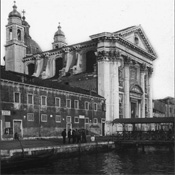
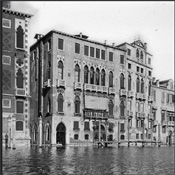
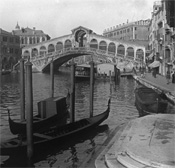
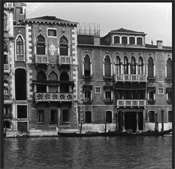
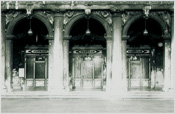
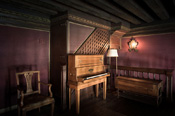
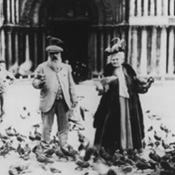
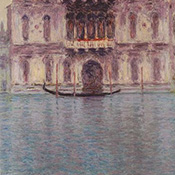
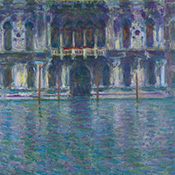
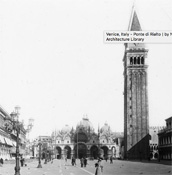
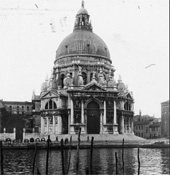
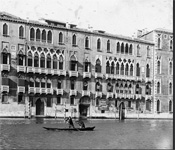
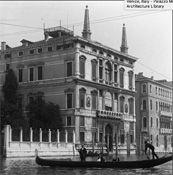
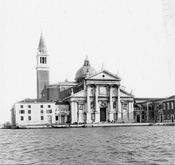
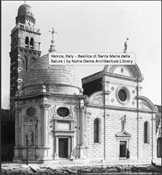
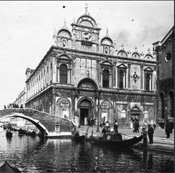
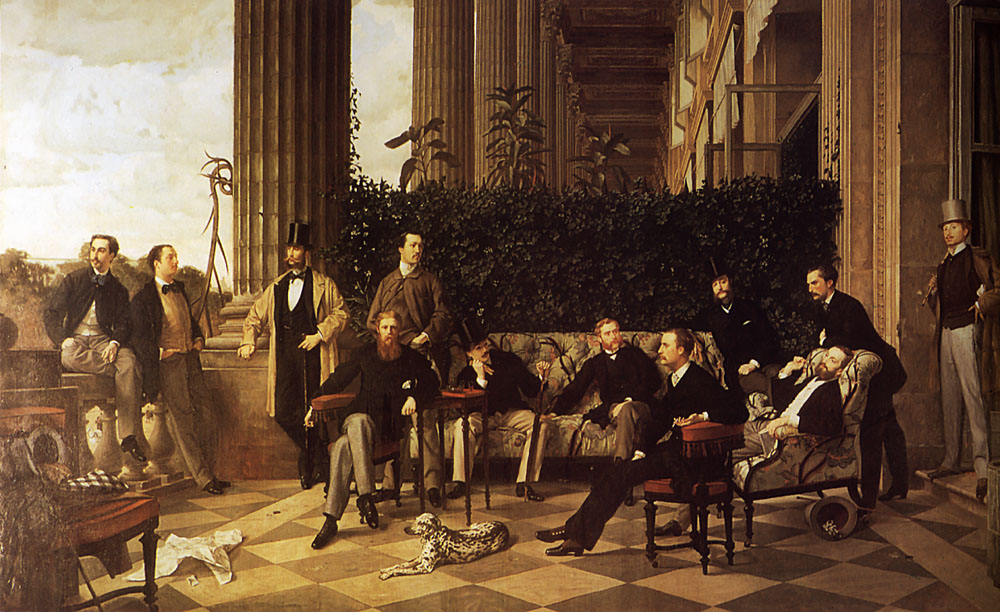 Prince Edmond de Polignac is seated third from the right.
Prince Edmond de Polignac is seated third from the right.